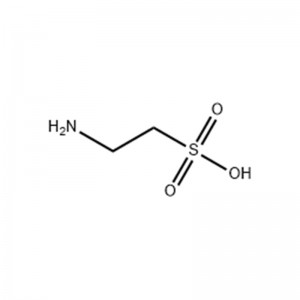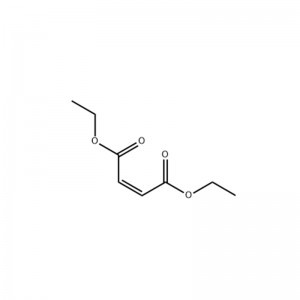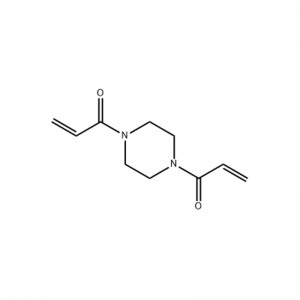
Products
Taurine
Structural Formula

Physical Properties
Appearance: White crystalline or crystalline powder
Density: 1.00 g/mL at 20 °C
Melting point: >300 °C (lit.)
Refractivity: 1.5130 (estimate)
Solubility: H2O: 0.5 M at 20 °C, clear, colorless
Acidity factor: (pKa)1.5 (at 25 °C)
Storage conditions: 2-8°C
PH value: 4.5-6.0 (25°C, 0.5 M in H2O)
Safety Data
It belongs to common goods
Customs code:2921199090
Export Tax Refund Rate(%):13%
Application
It is an essential amino acid for human growth and development, and plays an important role in promoting the growth and development of children, especially infants' brains and other important organs. It is also widely used in pharmaceutical industry, food industry, detergent industry and fluorescent whitening agent production. In addition, it is also used for other organic synthesis and biochemical reagents. It is an essential sulfonated amino acid, which regulates the apoptosis of some cells and participates in many metabolic activities in vivo. Metabolites of methionine and cysteine. It can also be used for treating common cold, fever, neuralgia, tonsillitis, bronchitis, rheumatoid arthritis and drug poisoning.
Taurine is an amino acid converted from sulfur-containing amino acids, also known as taurocholic acid, taurocholic acid, taurocholine, and taurocholine. Taurine is widely distributed in all tissues and organs of the body and exists mainly in the free state in intertissue and intracellular fluids. It was first discovered in the bile of bulls and got its name, but has long been considered a non-functional metabolite of sulfur-containing amino acids. Taurine is a sulfur-containing amino acid in animals, but is not a component of protein. Taurine is widely distributed in human and animal brain, heart, liver, kidney, ovary, uterus, skeletal muscle, blood, saliva and milk in the form of free amino acids, with the highest concentration in tissues such as pineal gland, retina, pituitary gland and adrenal gland. In the heart of mammals, free taurine accounts for as much as 50% of the total free amino acids.
Synthesis and metabolism
In addition to direct dietary intake of taurine, the animal organism can also biosynthesize it in the liver. The intermediate product of methionine and cysteine metabolism, cysteinesulfinic acid, is decarboxylated to taurine by cysteinesulfinic acid decarboxylase (CSAD) and oxidized to form taurine. In contrast, CSAD is considered to be the rate-limiting enzyme for taurine biosynthesis in mammals, and the lower activity of human CSAD compared to other mammals may be due to the lower capacity of taurine synthesis in humans as well. Taurine is involved in the formation of taurocholic acid and the production of hydroxyethyl sulfonic acid after catabolism in the body. The requirement of taurine depends on the bile acid binding capacity and muscle content.
In addition, taurine is excreted in the urine as free form or in the bile as bile salts. The kidney is the main organ for excretion of taurine and is an important organ for regulating the taurine content in the body. When taurine is excessive, the excess part is excreted in urine; when taurine is insufficient, the kidneys reduce the excretion of taurine through reabsorption. In addition, a small amount of taurine is also excreted through the intestine.








